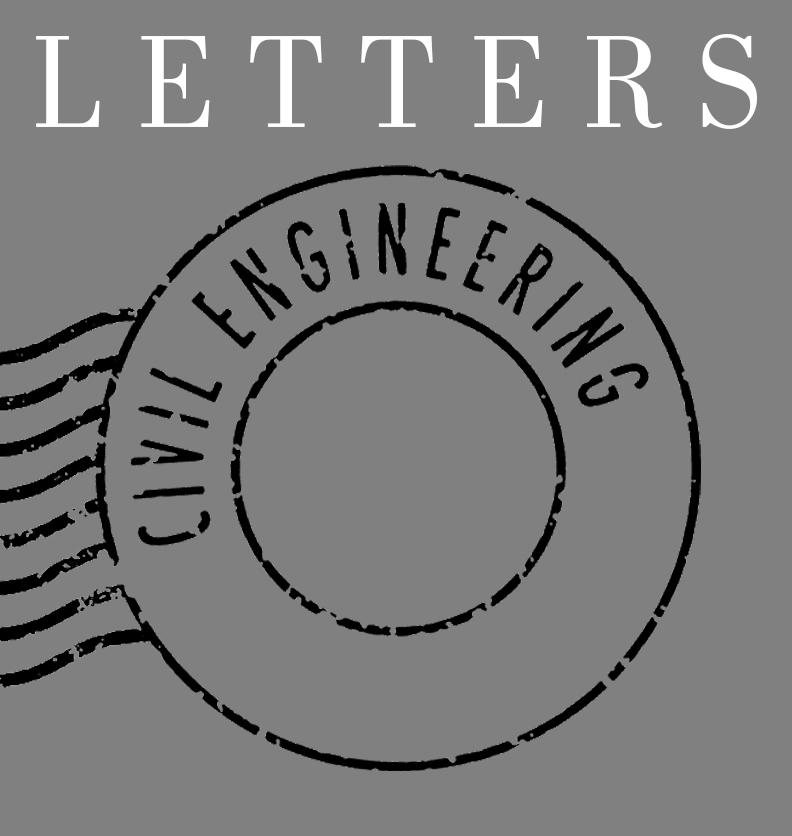
Changes over the decades
I greatly appreciated Laurie A. Shuster’s “Civil Engineering Is 90!” in the October 2020 edition. The decade after decade images of your covers displayed the progress we all enjoy today. I was born in a two-room cottage without plumbing and lit only by coal oil lamps four months before the October 1930 first edition. Your 1930 cover story told of the coming Hoover Dam that would supply power to many such homes.
Moving forward 30 years to 1960, your cover story was about the American Association of State Highway Officials (the predecessor to the American Association of State Highway and Transportation Officials) Road Test. I recognized the cover photo because I was on the team that analyzed the valuable data from that Ottawa, Illinois, test track. Accordingly, we updated the pavement design criteria used by the state of California.
In 1990, your cover story told of a lift helicopter used in construction. That 30-year period was marked by great strides in equipment and building materials, earth movers, construction cranes, and paving machines along with epoxies and fast-setting concrete. Records in speed and volumes were set and broken again and again.
Another 30 years brings us to your October 2020 cover story of the impressive new Temple University library where so many of these advances are evident. The part of the story that holds this old man in awe is the computer. I am sure that all those last-minute changes in the library design were aided by computed calculations. We have computers controlling the traffic signals and wastewater plants. But big data may be even more important since we can call up the information on all 911 calls, utility usage, traffic volumes, and other needed parameters by a single block, a neighborhood, or an entire city.
Ninety years — all the way from coal oil lamps to artificial intelligence. What will the next 90 years bring?
Robert O. Watkins, P.E., M.ASCE (retired), Ridgefield, Washington
Cheers for entrepreneurs
I thoroughly enjoyed the article “Entrepreneurial Engineers” in the September issue. Each of the stories reflects my own experience from more than 40 years ago — with one exception.
I had joined three engineer colleagues in an effort to buy out our employer, a large civil engineering firm. Our effort was in response to events that we believed endangered the future of the firm.
As a group we possessed engineering and management skills and experience of 15 to 30 years each. We prepared a management plan and had secured the financing when we were abruptly fired just hours before our attorney could tender the offer to the CEO.
The board of directors revoked the firing, but we moved forward with our backup plan, which was to form our own civil engineering practice. As it turned out, it was the best career decision I could have made.
I am confident that those profiled in the feature article will successfully manage the challenges of running a consulting practice. Moreover, I expect in later years they, too, will believe it was the best career decision they could have made.
Alexander Whitney Jr., P.E., F.ASCE (retired), Lancaster, Pennsylvania

